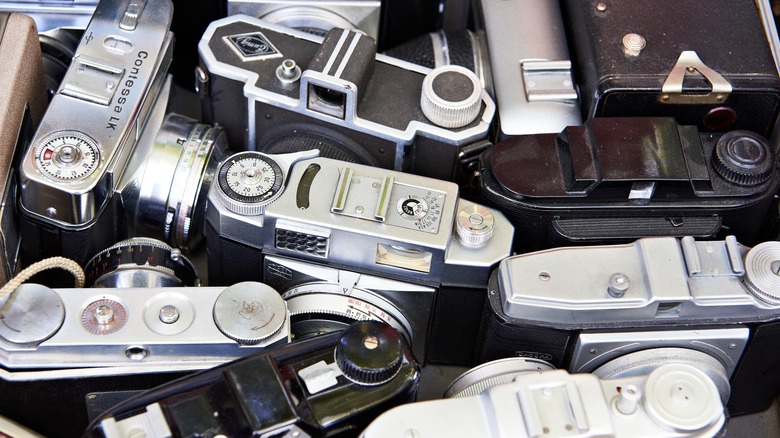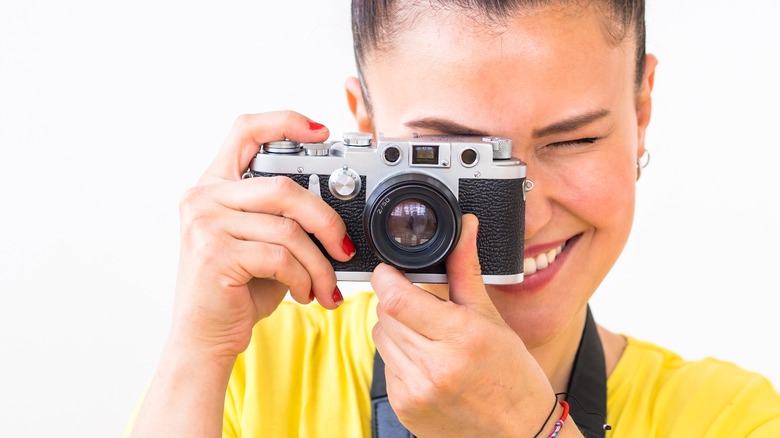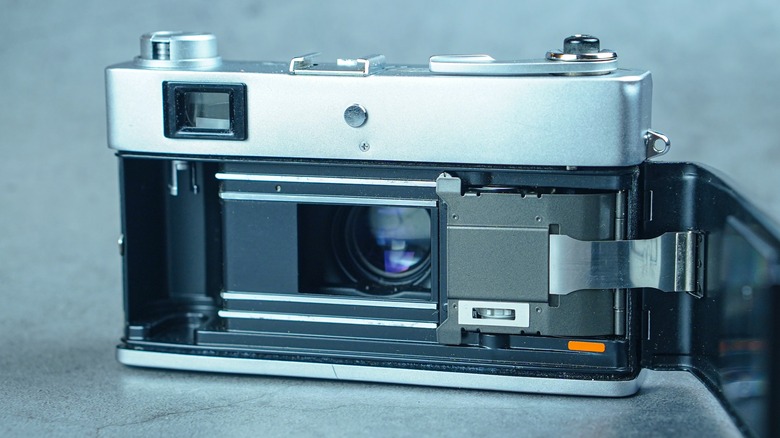What Exactly Is A Rangefinder Camera & How Does One Work?
Choosing a camera for photography can be a really tricky proposition. It's not just a matter of "digital camera or film camera." For example, if you choose film, you also need to decide whether or not to go with a 35mm camera. Then there's the matter of choosing between an SLR or a rangefinder camera.
The best (sarcastic best) part is, if you ask photo experts and hobbyists what you should go with, you're bound to get different answers. Some prefer film over digital, or the other way around. Others might swear by a wide variety of formats, such as 60mm film rather than the kind of 35mm canisters you probably think of whenever film is brought up in conversation. Of course the same goes for rangefinder models.
There are pros and cons to most kinds of cameras, so ultimately, it's most important to buy whatever you believe suits your needs best. Just make sure you know what you're getting into before jumping in — unless you prefer to figure out your camera as you go (which is a valid, albeit expensive approach).
What makes a rangefinder a rangefinder?
The primary difference between a rangefinder camera and other models is the way it approaches framing and focus. Unlike digital and SLR cameras, which show you exactly what the lens sees, rangefinders utilize a separate "range-finding" window that's positioned a bit higher than the actual camera lens.
When you look through a rangefinder camera, you're viewing the scene through a pair of small windows (one at the front of the camera body and one at the back, by your face). The lens projects directly onto the film once the shutter is opened, and there are no mirrors involved in the process.
Conversely, SLR-style cameras use a series of mirrors to bounce the image seen through the lens up to the viewing window. When a photo is taken with one of these, the mirror lined up with the inside of the lens flips out and out of the way of the film as the shutter opens.
Benefits and drawbacks
There are some useful aspects to the rangefinder setup. For instance, the viewfinder on a rangefinder camera typically reveals a little bit more of the area surrounding what's in frame, which can be helpful when trying to snap a photo of something moving into frame. The manual focus can also outpace the autofocus function found in other types of cameras, provided you're well versed in the practice.
The lack of a mirror is also kind of a big deal. Having no other mechanisms that move at the same time as the shutter means no "shaking" — something that can accommodate slower shutter speeds without having to steady the camera on a solid surface or tripod first. It also means the lens can sit closer to the film, which has the potential to produce sharper photos than what you'd get with a different camera setup. Also rangefinder cameras tend to be smaller and more compact than other models, and the actual shutter sound tends to be much quieter.
With all of that said, not knowing exactly what the lens is seeing can lead to photos that are composed in a way you weren't expecting, or with a viewing angle that's slightly off from what you wanted (particularly with closer subjects). Focusing a rangefinder can also be tricky in certain situations (such as low light), and in most cases you'll have a slower maximum shutter speed (useful for depth of field and more control in daylight) than with other camera types.


